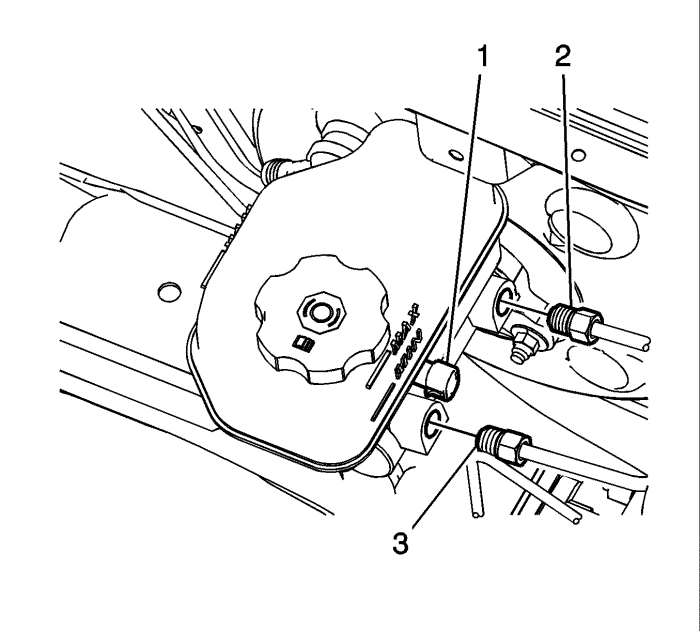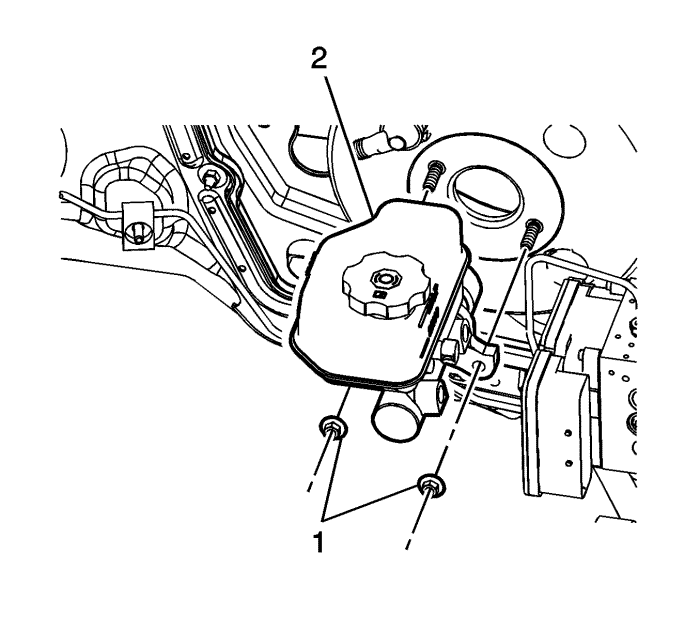Master Cylinder Replacement — LHD
Removal Procedure
Warning: Refer to Brake Fluid Irritant Warning in the Preface section.
Caution: Refer to Brake Fluid Effects on Paint and Electrical Components Caution in the Preface section.
- Using a suitable tool, remove the brake fluid from the brake master cylinder reservoir.
- Discard the brake fluid into an approved container.
- Remove the underhood electrical center. Refer to Underhood Electrical Center or Junction Block Replacement .
- Without draining the coolant or removing the hoses, remove and position aside the radiator surge tank. Refer to
Radiator Surge Tank Replacement : Diesel → Petrol Engines .

- Disconnect the master cylinder fluid level sensor electrical connector (1).
- Disconnect the master cylinder primary brake pipe fitting (2).
- Cap the brake pipe fitting and plug the master cylinder outlet port to prevent brake fluid loss and contamination.
- Disconnect the master cylinder secondary brake pipe fitting (3).
- Cap the brake pipe fitting and plug the master cylinder outlet port to prevent brake fluid loss and contamination.

- Remove the master cylinder nuts (1).
- Remove the master cylinder (2).
Installation Procedure
- If installing a new master cylinder, bench bleed the master cylinder. Refer to Master Cylinder Bench Bleeding .

- Install the master cylinder (2).
Caution: Refer to Fastener Caution in the Preface section.
- Install the master cylinder nuts (1) and tighten to 13 N·m (115 lb in).

- Connect the master cylinder fluid level sensor electrical connector (1).
- Connect the master cylinder primary brake pipe fitting (2) and tighten to 16 N·m (12 lb ft).
- Connect the master cylinder secondary brake pipe fitting (3) and tighten to 16 N·m (12 lb ft).
- Install the radiator surge tank. Refer to
Radiator Surge Tank Replacement : Diesel → Petrol Engines .
- Install the underhood electrical center. Refer to Underhood Electrical Center or Junction Block Replacement .
- Bleed the hydraulic brake system. Refer to
Hydraulic Brake System Bleeding : Manual → Pressure .
| © Copyright Chevrolet. All rights reserved |



